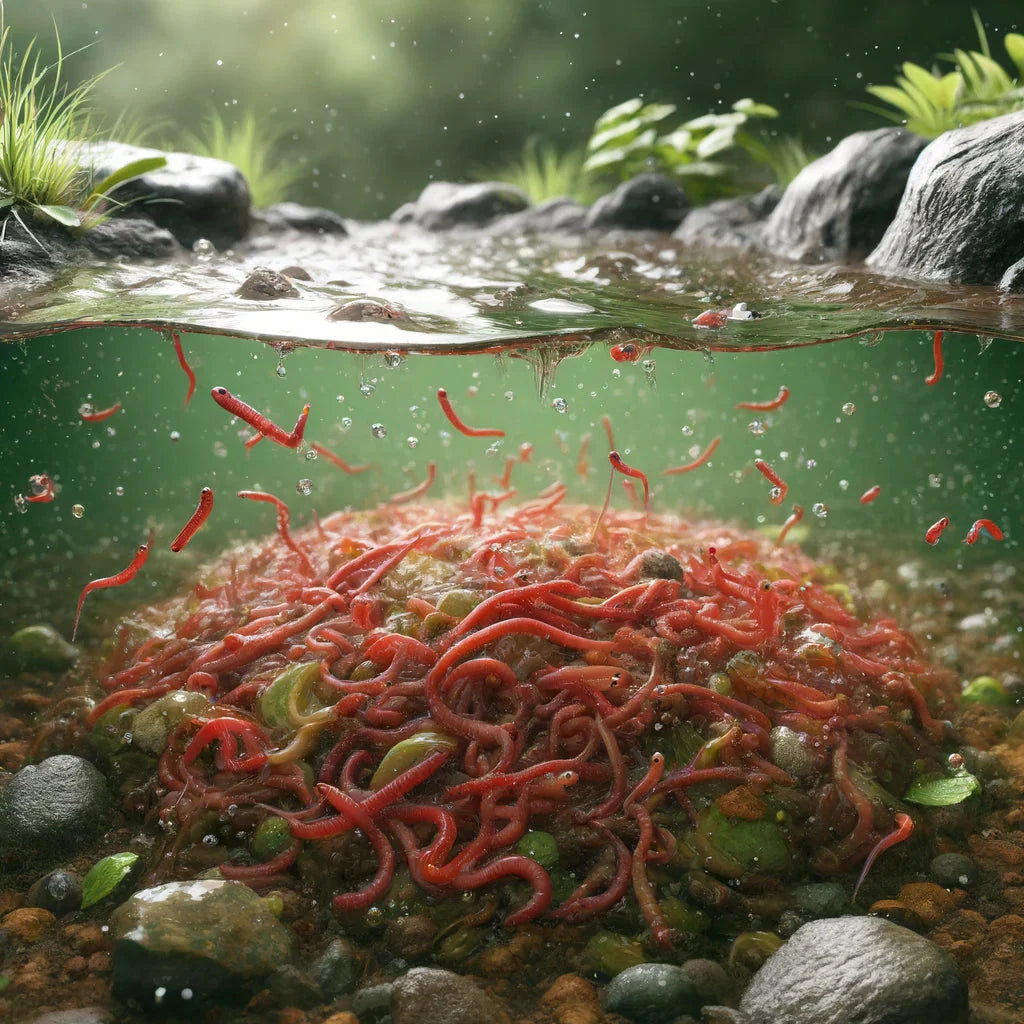Red wigglers: Why they’re ideal for composting
Red wigglers: Why they’re ideal for composting
Blog Article
Utilizing Red Wigglers for Efficient Organic Waste Disposal
Using red wigglers for natural garbage disposal presents an engaging strategy to taking care of food scraps while advertising environmental sustainability. These worms not just enhance waste decomposition but additionally yield important worm castings, which can significantly enhance soil health. Their capacity to refine large volumes of organic material with very little effort settings them as an accessible remedy for households and communities alike. Recognizing the nuances of setting up an effective worm container and maintaining an optimum habitat is essential for optimizing their benefits. The next actions in this procedure may stun you.
Benefits of Using Red Wigglers
One of the most engaging benefits of making use of red wigglers for organic waste disposal is their exceptional effectiveness in composting. These worms, clinically understood as Eisenia fetida, are specifically adjusted for breaking down organic materials, allowing them to refine waste as much as twice their body weight each day. This rapid decay not only accelerates the composting process yet also generates nutrient-rich worm spreadings that dramatically improve dirt top quality.
Additionally, red wigglers add to a reduction in garbage dump waste. By drawing away organic products from land fills, they aid minimize methane discharges-- a potent greenhouse gas. This eco-friendly advantage is critical in the fight against environment adjustment.
In addition, red wigglers are low-maintenance and can grow in numerous atmospheres, making them accessible for both beginner and skilled composters. Their ability to replicate quickly guarantees a constant population, helping with recurring waste processing.
Establishing Your Worm Bin
Producing an effective worm bin is important for making best use of the advantages of composting with red wigglers. Make certain the container has sufficient drain holes to prevent excess dampness, as red wigglers prosper in a moist but not soaked environment.
(Lake Rhodhiss Bait)Next, prepare the bedding material, which serves as the worms' environment and food resource. Shredded paper, cardboard, and coconut coir are exceptional alternatives. Go for a bedding depth of around 4 to 6 inches. The bin ought to be placed in a dark, temperature-controlled location, preferably in between 55 ° F and 77 ° F, to preserve worm task.
As soon as the bin is set up, present the red wigglers, enabling them to accustom to their brand-new setting. It's crucial to monitor moisture degrees and temperature frequently. A properly maintained bin will not just support the health and wellness of the worms yet additionally assist in effective decomposition of natural waste. By following these standards, you can develop a flourishing ecosystem that contributes to lasting waste management.
(red wigglers eisenia fetida)
What to Feed Red Wigglers
An understanding of the proper diet for red wigglers is vital for maintaining a healthy and balanced worm population and optimizing composting performance. These things not just supply necessary nutrients however also contribute to the moisture balance within the worm container.
It is critical to stay clear of particular foods that can harm the worm populace. Red wigglers should not be fed meat, dairy products, oily foods, or processed things, as these can draw in parasites and create unpleasant smells. red wigglers. Furthermore, citrus fruits and spicy foods need to be reduced, as their acidity can be harmful to worms
To promote optimal digestion, food needs to be chopped right into smaller pieces, helping with quicker malfunction and usage. Introducing food in small amounts is also crucial; overfeeding can result in anaerobic problems and attract unwanted pests. Keeping an eye on the worm container for food usage rates will aid make sure that red wigglers are obtaining an appropriate diet plan while keeping an efficient composting setting. Correct feeding methods are essential for promoting a flourishing environment within the worm bin.
Maintaining Your Worm Habitat
A well-maintained worm habitat is vital for the health and performance of red wigglers. To make certain ideal conditions, it is crucial to monitor temperature, dampness, and aeration within the worm bin. Red wigglers thrive in a temperature level variety of 55 to 77 levels Fahrenheit. Surpassing this array can stress the worms, so it is very important to put the container in a suitable place away from straight sunshine and extreme temperature levels.
Wetness degrees should be kept constant; the bed linen needs to perspire however not soaked. A great guideline is to keep wetness at approximately 70% to 80%. If the bed linens ends up being also wet, it can result in anaerobic conditions that are damaging to the worms. Including completely dry carbon-rich products, such as shredded paper or cardboard, can assist soak up excess dampness.

Using Worm Spreadings in Gardening
Rich in nutrients and advantageous microorganisms, worm spreadings work as an exceptional natural plant food for horticulture. Generated through the digestive processes of red wigglers, these castings consist of a variety of important nutrients, including nitrogen, phosphorus, and potassium, which promote robust plant development. Unlike artificial plant foods, worm castings use a slow-release mechanism, making certain that nutrients are available to plants over an extended Read More Here duration, thereby decreasing the threat of nutrient leaching and dirt depletion.
In enhancement to nutrient content, worm castings enhance dirt framework and aeration, boosting wetness retention and drainage. The microbial life present in worm castings helps to subdue microorganisms and promotes a healthy soil ecosystem, more profiting plant health and wellness. When included right into the soil or used as a top clothing, worm castings can substantially increase seed germination rates, root advancement, and overall plant vitality.
For optimal results, garden enthusiasts must apply worm spreadings at a price of 1-2 inches per square foot, mixing them into the dirt or incorporating them into potting mixes. On the whole, using worm spreadings is an environmentally friendly technique to improving dirt fertility and ensuring growing garden atmospheres.
Final Thought

Report this page